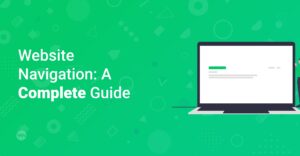Preface
Are you ready to take your website’s header design from basic to brilliant? The header is the first thing visitors see, making it a crucial element in creating a lasting impression. With the Astra theme and Elementor page builder, you have a powerful combination at your fingertips. This guide will walk you through maximizing Astra’s Header Builder in Elementor to craft a unique and engaging navigational experience.
Understanding the Power of Astra and Elementor
Astra is a lightweight, customizable WordPress theme designed for speed and flexibility. When paired with Elementor, a drag-and-drop page builder, you gain unparalleled control over your website’s design. One of Astra’s standout features is its Header Builder, which allows you to create custom headers without needing to write a single line of code. Elementor takes it up a notch by making the design process even more visual and intuitive. If you haven’t already, check out our complete guide to getting started with Elementor and learn how to install Astra Starter Templates.
Info: Before we dive in, make sure you have both the Astra theme and Elementor plugin installed and activated on your WordPress site.
Key Features of Astra’s Header Builder
Astra’s Header Builder offers a variety of elements that you can drag and drop into your header:
- Primary Header: The main header area usually containing your logo and navigation menu.
- Secondary Header: An additional header area above or below the primary header, perfect for adding extra information like contact details or social media links.
- Logo: Upload your logo image and customize its size.
- Primary Menu: Your main navigation menu.
- Secondary Menu: An additional menu for less important links.
- Buttons: Add call-to-action buttons to your header.
- Search: Include a search bar for easy site navigation.
- HTML: Add custom HTML code for advanced customization.
- Text/HTML: Display text, such as phone numbers or promotional messages.
- Social Icons: Link to your social media profiles.
With these elements, you can create a header that perfectly matches your brand and website’s needs.
Integrating Astra’s Header Builder with Elementor
While Astra’s Header Builder is powerful on its own, integrating it with Elementor opens up even more possibilities. Here’s how:
Install Elementor Header & Footer Builder: This free plugin by Brainstorm Force (the makers of Astra) allows you to design custom headers and footers using Elementor and display them on your site using Elementor templates. This plugin extends the functionality of both Astra and Elementor, giving you full control of your header design. Simply, go to Plugins > Add New in your WordPress dashboard, search for ‘Elementor Header & Footer Builder’ and install it.
Create a New Header Template: After installing and activating the plugin, go to Appearance > Elementor Header & Footer Builder > Add New. Give your header template a name, select ‘Header’ as the type, and choose where you want to display it (e.g., entire website).
Design Your Header with Elementor: Click the ‘Edit with Elementor’ button to open the Elementor editor. Here, you can use Elementor’s drag-and-drop interface to design your header. Add columns, widgets, and customize the layout to match your vision.
Incorporate Astra’s Header Elements: To use Astra’s header elements within Elementor, you’ll need to install the Astra Pro addon. With Astra Pro, you can use Astra’s header elements as widgets within Elementor. Simply search for ‘Astra Header’ in the Elementor widgets panel and drag your desired elements into your header design.
Hint: Familiarize yourself with Elementor’s interface and features. Check out this [inspirational showcase of beautiful websites built with Elementor 1](https://www.startmakingwebsites.com/inspirational-showcase-of-beautiful-websites-built-with-elementor-1/) and [inspirational showcase of beautiful websites built with Elementor 2](https://www.startmakingwebsites.com/inspirational-showcase-of-beautiful-websites-built-with-elementor-2/) for inspiration.
Step-by-Step Guide to Creating a Unique Header
Let’s walk through creating a unique header using Astra and Elementor:
1. Planning Your Header Layout
Before diving into the design, plan your header layout. Consider:
- Logo Placement: Where will your logo be positioned? Left, center, or right?
- Navigation Menu: How will your navigation menu be structured? Will you use a mega menu or a simple dropdown?
- Call to Action: Do you want to include a button for a specific action, like ‘Contact Us’ or ‘Shop Now’?
- Responsiveness: How will your header adapt to different screen sizes?
Info: Understanding the latest web design trends can provide valuable insights and inspiration for your header design. Staying up-to-date with current design practices helps ensure your website looks modern and appealing.
2. Setting Up the Basic Structure
- Add a Section: In Elementor, add a new section to your header template.
- Choose a Layout: Select a column layout that suits your needs (e.g., three columns for logo, navigation, and button).
- Customize Background: Set a background color or image for your header section. You can use Elementor’s styling options to add gradients, overlays, and more.
Here is a code snippet that will help you to adjust the background color to your brand:
.elementor-section {
background-color: #f0f0f0; /* Replace with your desired color */
}
3. Adding Your Logo and Navigation
- Logo: Drag an Image widget into the first column and upload your logo. Adjust the size and alignment as needed.
- Navigation Menu: Drag an Astra Nav Menu widget (from Astra Pro) into the second column. Select your desired menu from the dropdown.
- Styling: Use Elementor’s styling options to customize the colors, fonts, and spacing of your logo and navigation menu. Ensure they align with your brand’s aesthetic. For more tips on choosing the right fonts, see how to choose the right fonts for your website.
4. Incorporating a Call-to-Action Button
- Button: Drag a Button widget into the third column.
- Text and Link: Set the button text (e.g., ‘Contact Us’) and link it to the appropriate page.
- Styling: Customize the button’s appearance with Elementor’s styling options. Choose a color that stands out and complements your header design.
5. Making Your Header Sticky
A sticky header stays fixed at the top of the screen as users scroll down, making navigation easier. Here’s how to create one with Astra and Elementor:
- Astra Options: In the Astra theme options, go to Header Builder > Primary Header and enable the ‘Sticky Header’ option.
- Customize Sticky Header: You can customize the appearance of your sticky header, such as changing the background color or adding a shadow.
You can also achieve a sticky header effect using CSS. Here is an example:
.site-header {
position: fixed;
top: 0;
left: 0;
width: 100%;
z-index: 1000; /* Ensure it stays on top of other elements */
}
For a CSS-only method, check out this article on creating a free sticky header for Astra starter templates with CSS only.
6. Ensuring Responsiveness
Responsiveness is critical for providing a seamless experience on all devices. Here’s how to ensure your header looks great on desktops, tablets, and smartphones:
- Elementor’s Responsive Mode: Use Elementor’s responsive mode to preview your header on different screen sizes.
- Adjust Column Widths: Adjust the column widths to ensure your logo, navigation, and button fit nicely on smaller screens.
- Hide Elements: Hide certain elements on specific devices if they clutter the header on smaller screens. For example, you might hide the button on mobile devices and replace it with a mobile menu icon.
- Mobile Menu: Use the Astra mobile header options to create a custom mobile menu. You can choose from different menu styles, such as a dropdown or slide-out menu.
7. Advanced Customization Tips
Here are some advanced customization tips to take your header design to the next level:
- Use Custom Fonts: Upload custom fonts to match your brand’s typography. Consider using these top 10 free best google fonts for your website.
- Add Animations: Use Elementor’s motion effects to add subtle animations to your header elements.
- Incorporate Social Media Icons: Add social media icons linked to your profiles. Customize the icons’ appearance to match your brand.
- Use Conditional Logic: With Elementor Pro, you can use conditional logic to display different headers based on user roles, pages, or other criteria.
Examples of Unique Header Designs
To spark your creativity, here are some examples of unique header designs created with Astra and Elementor:
- Minimalist Header: A clean and simple header with a logo, navigation menu, and a subtle search icon.
- Bold and Colorful Header: A vibrant header with bold colors, large fonts, and eye-catching animations.
- Creative Layout: An unconventional header layout with overlapping elements and creative typography.
- Video Background Header: Integrate a short video as the background of your header section to create a dynamic and engaging experience.
Avoiding Common Header Design Mistakes
To ensure your header design is effective, avoid these common mistakes:
- Cluttered Design: Keep your header clean and simple. Avoid overcrowding it with too many elements.
- Poor Readability: Ensure your text is easy to read by choosing appropriate fonts and colors.
- Slow Loading Times: Optimize your header images to minimize loading times.
- Inconsistent Branding: Make sure your header design aligns with your overall brand aesthetic.
Additional Resources
- Astra Theme Documentation: Astra Theme Official Documentation
- Elementor Documentation: Elementor Official Documentation
- WordPress.org: WordPress.org
Conclusion
By leveraging the power of Astra’s Header Builder and Elementor, you can create a unique and engaging header that enhances your website’s user experience. Remember to plan your layout, customize the design to match your brand, ensure responsiveness, and avoid common mistakes. With a little creativity and attention to detail, you can craft a header that leaves a lasting impression on your visitors. And don’t forget to optimize your website for SEO to ensure it reaches a wider audience. Learn how to optimize your website for SEO with this quickstart guide for WordPress. Happy designing!



